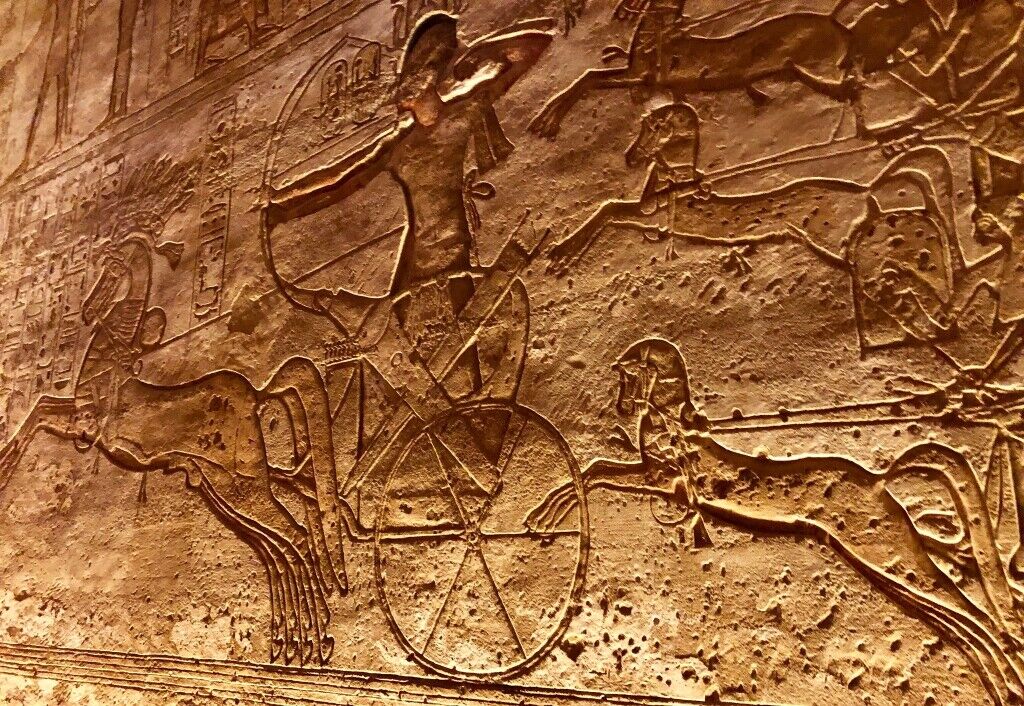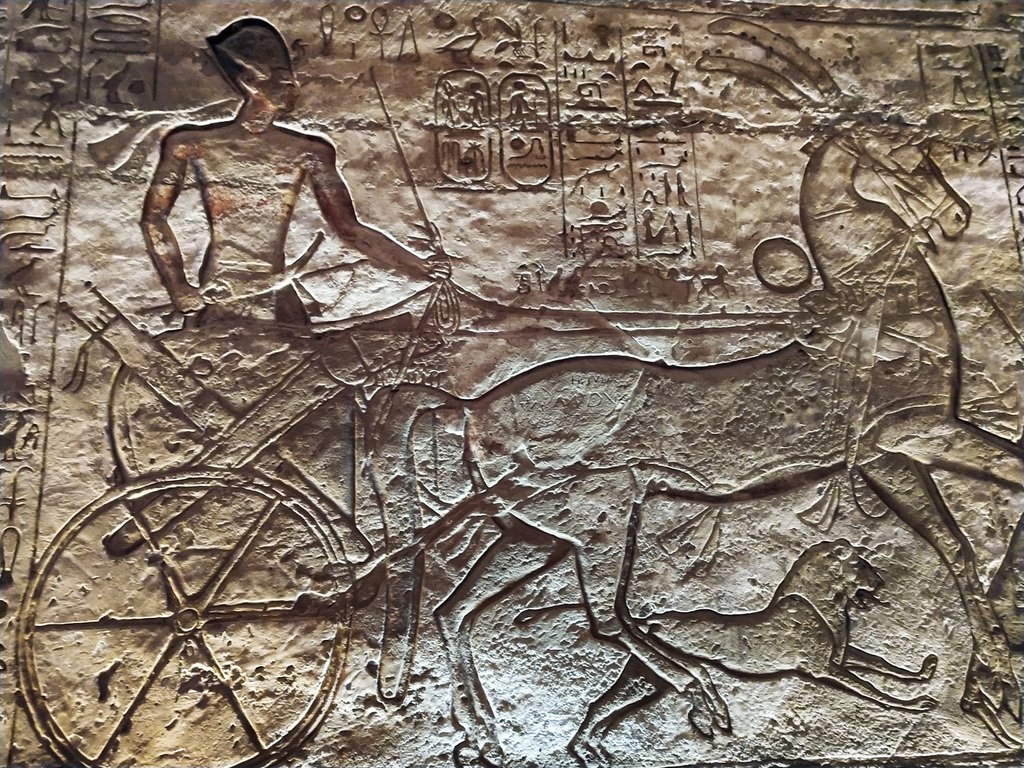In the grandeur of the New Kingdom in ancient Egypt, a monumental relief transports us to a defining moment in history: the Battle of Kadesh. Carved within the Great Temple of Ramesses II at Abu Simbel, the scene depicts the legendary pharaoh, King Ramesses II, on his majestic chariot, leading his army into the heat of battle.

Dated to around 1274 BC, during the 19th Dynasty, the relief captures the essence of Ramesses II’s military prowess and his pursuit of eternal glory. The colossal figure of the pharaoh, larger-than-life in both stature and spirit, exudes a commanding presence as he stands tall atop his chariot, reins in hand.
With determined eyes and a regal stance, Ramesses II epitomizes the strength and bravery of a warrior-king. His chariot, adorned with ornate decorations and pulled by powerful horses, charges forward, trampling the enemy beneath its wheels. The scene pulsates with energy and movement, as the chariots clash and soldiers engage in fierce combat.
The Battle of Kadesh, immortalized in this relief, was a pivotal event in ancient Egyptian history. It involved a military conflict between the Egyptian forces led by Ramesses II and the Hittite Empire. Although the outcome of the battle remained inconclusive, Ramesses II skillfully constructed a narrative of victory and heroism, solidifying his legacy as a mighty pharaoh.

Beyond its historical significance, the relief from the Great Temple of Ramesses II serves as a testament to the artistic mastery of ancient Egyptian craftsmen. The intricate details and meticulous craftsmanship breathe life into the stone, capturing the intensity of the battle and the grandeur of the pharaoh’s triumph.
As we gaze upon King Ramesses II on his chariot, frozen in time within the walls of Abu Simbel, we are transported to an era of triumph and glory. The relief not only commemorates a significant military campaign but also immortalizes the indomitable spirit of a ruler who shaped the destiny of ancient Egypt.
This artistic marvel invites us to delve deeper into the annals of history, to explore the lives and achievements of those who came before us. It reminds us of the enduring power of art to convey the stories of the past and to evoke a sense of awe and admiration for the remarkable civilizations that once thrived upon the banks of the Nile.